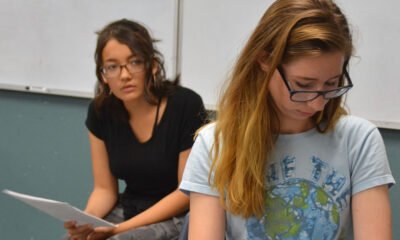Business
Financial Savvy Unlocks the American Dream for Young Adults

Since the 1890s, the American Dream has been closely tied to homeownership. Generations of Americans have viewed buying a house as a key way to build wealth and create a lasting family legacy.
Today, however, this dream seems increasingly elusive for young adults. Generation Z and young Millennials face formidable obstacles such as soaring home prices and high interest rates. According to Consumer Affairs, Generation Z’s purchasing power is a staggering 86% lower than that of Baby Boomers when they were in their twenties.
It’s therefore not shocking that one-third of Gen Z-ers don’t believe they’ll ever own a home. This isn’t due to a lack of interest; a 2022 survey by Junior Achievement and Fannie Mae found that 88% of teens hope to own a home someday. However, fewer than half could correctly define a home mortgage, and 76% admitted to lacking a clear understanding of credit scores.
This financial illiteracy significantly hampers Generation Z’s ability to secure mortgages. High debt, low credit scores, and troubled credit histories compound the problem. Schools often don’t teach financial literacy, despite it being crucial for navigating today’s economic complexities.
Presently, 25 U.S. states mandate some form of financial education in high school, nearly doubling from a decade ago. Yet these courses usually last only one semester and are taught at a single grade level. In contrast, subjects like science and math are spread across multiple grades, meeting students at various developmental stages.
Junior Achievement of Arizona sees financial literacy as “the other literacy.” They argue that introducing teens to financial concepts in a single course is akin to expecting a student unfamiliar with the alphabet to read a novel. Complex topics such as credit scores, escrow, and mortgage payments require more extensive education.
To address this, JA has developed an age-appropriate curriculum covering budgeting, saving, investing, and understanding credit. They emphasize experiential learning through hands-on activities and involve volunteers from the business community to help students connect classroom lessons to real-world situations.
The impact of JA’s model is significant. Research indicates that 82% of JA alumni feel they have a strong financial foundation. Additionally, 68% of alumni aged 18 to 29 report financial independence from their parents, compared to 30% of their peers. JA alumni also purchase their first homes at an average age of 29, while the national average is 36.
Emphasizing continuous financial literacy education extends beyond the goal of homeownership. It equips students with the tools they need for economic stability as adults. And that is an American Dream we can all support.
Katherine Cecala is the president of Junior Achievement of Arizona.
















